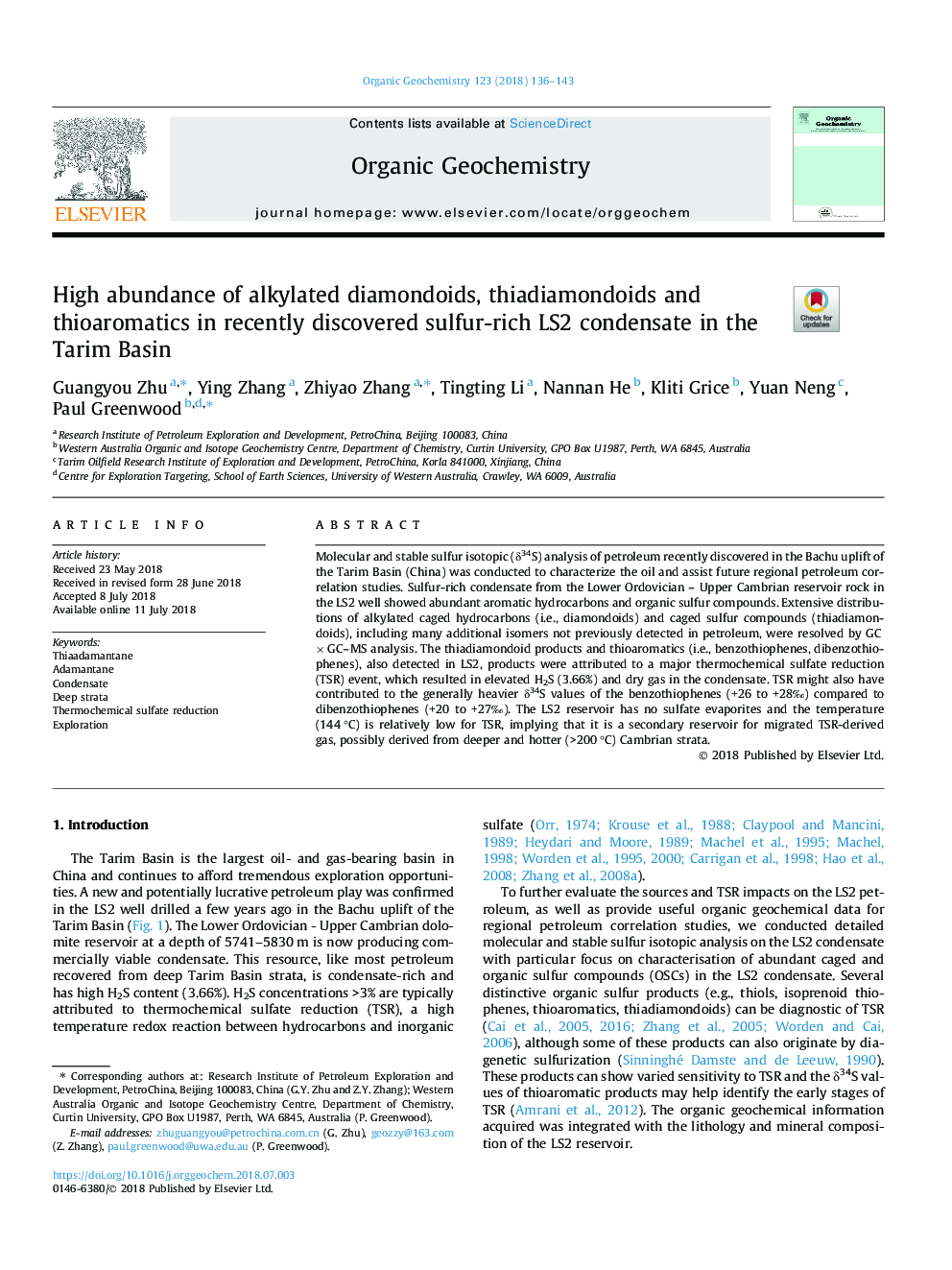| Article ID | Journal | Published Year | Pages | File Type |
|---|---|---|---|---|
| 7816879 | Organic Geochemistry | 2018 | 8 Pages |
Abstract
Molecular and stable sulfur isotopic (δ34S) analysis of petroleum recently discovered in the Bachu uplift of the Tarim Basin (China) was conducted to characterize the oil and assist future regional petroleum correlation studies. Sulfur-rich condensate from the Lower Ordovician - Upper Cambrian reservoir rock in the LS2 well showed abundant aromatic hydrocarbons and organic sulfur compounds. Extensive distributions of alkylated caged hydrocarbons (i.e., diamondoids) and caged sulfur compounds (thiadiamondoids), including many additional isomers not previously detected in petroleum, were resolved by GCâ¯Ãâ¯GC-MS analysis. The thiadiamondoid products and thioaromatics (i.e., benzothiophenes, dibenzothiophenes), also detected in LS2, products were attributed to a major thermochemical sulfate reduction (TSR) event, which resulted in elevated H2S (3.66%) and dry gas in the condensate. TSR might also have contributed to the generally heavier δ34S values of the benzothiophenes (+26 to +28â°) compared to dibenzothiophenes (+20 to +27â°). The LS2 reservoir has no sulfate evaporites and the temperature (144â¯Â°C) is relatively low for TSR, implying that it is a secondary reservoir for migrated TSR-derived gas, possibly derived from deeper and hotter (>200â¯Â°C) Cambrian strata.
Related Topics
Physical Sciences and Engineering
Chemistry
Organic Chemistry
Authors
Guangyou Zhu, Ying Zhang, Zhiyao Zhang, Tingting Li, Nannan He, Kliti Grice, Yuan Neng, Paul Greenwood,
